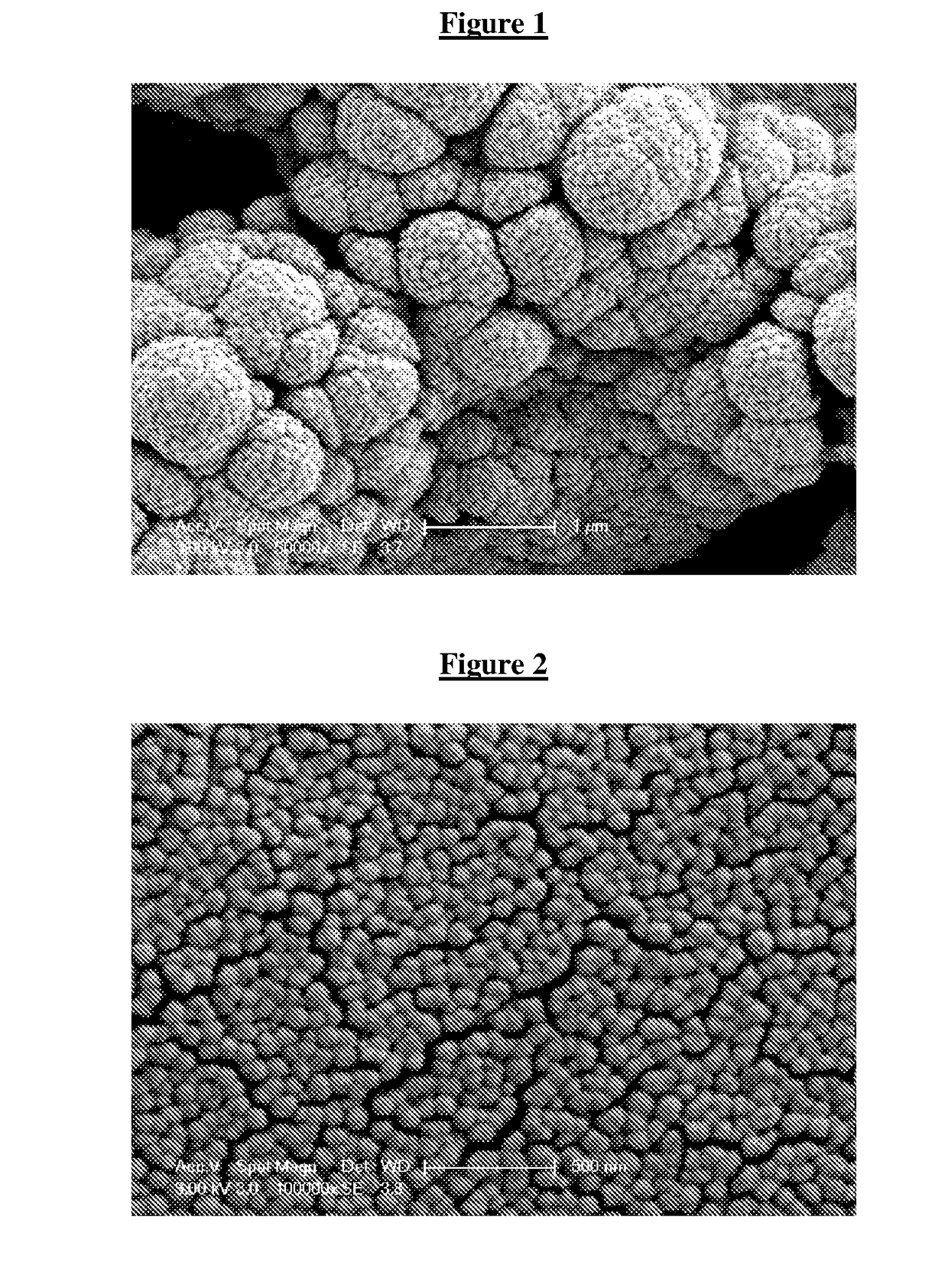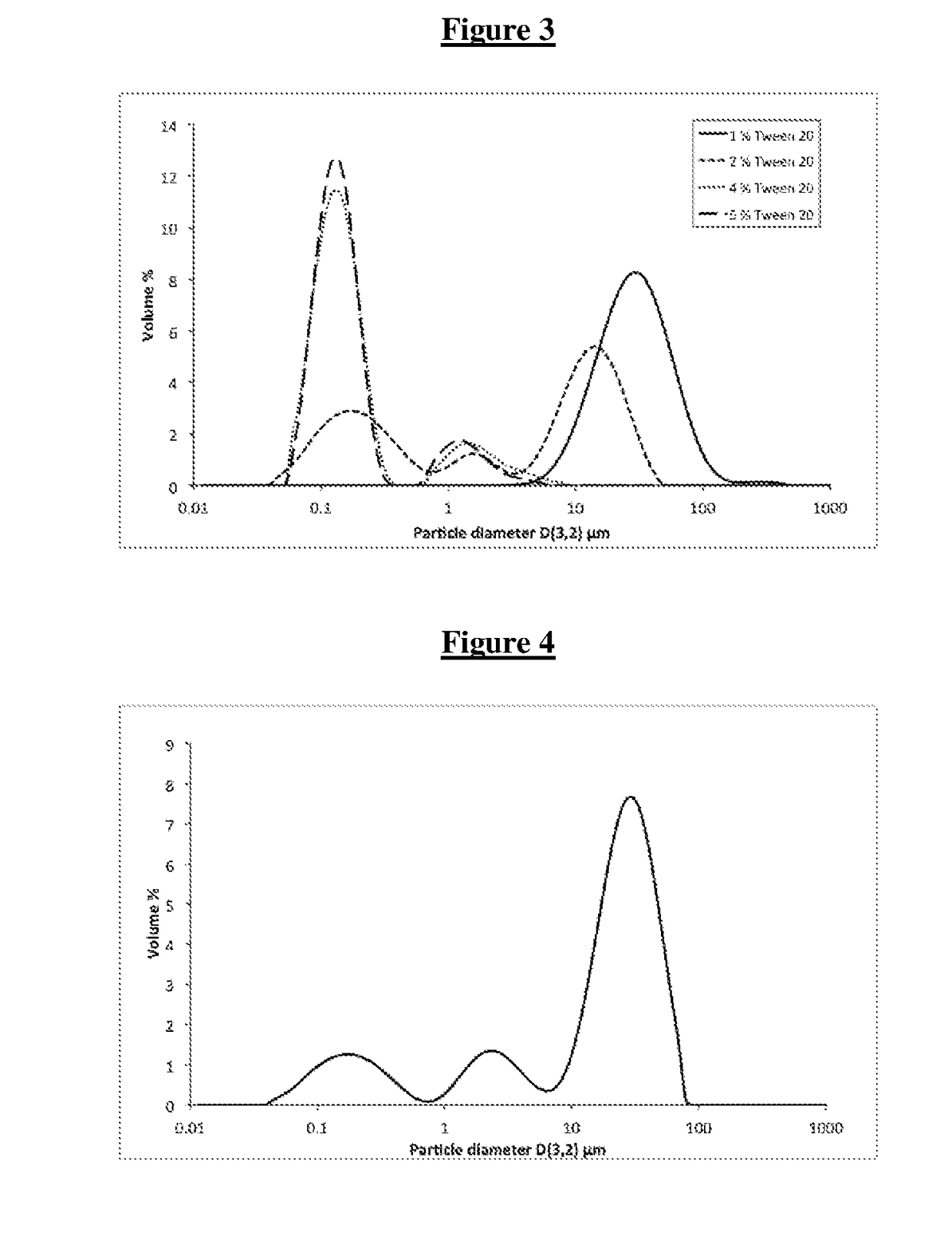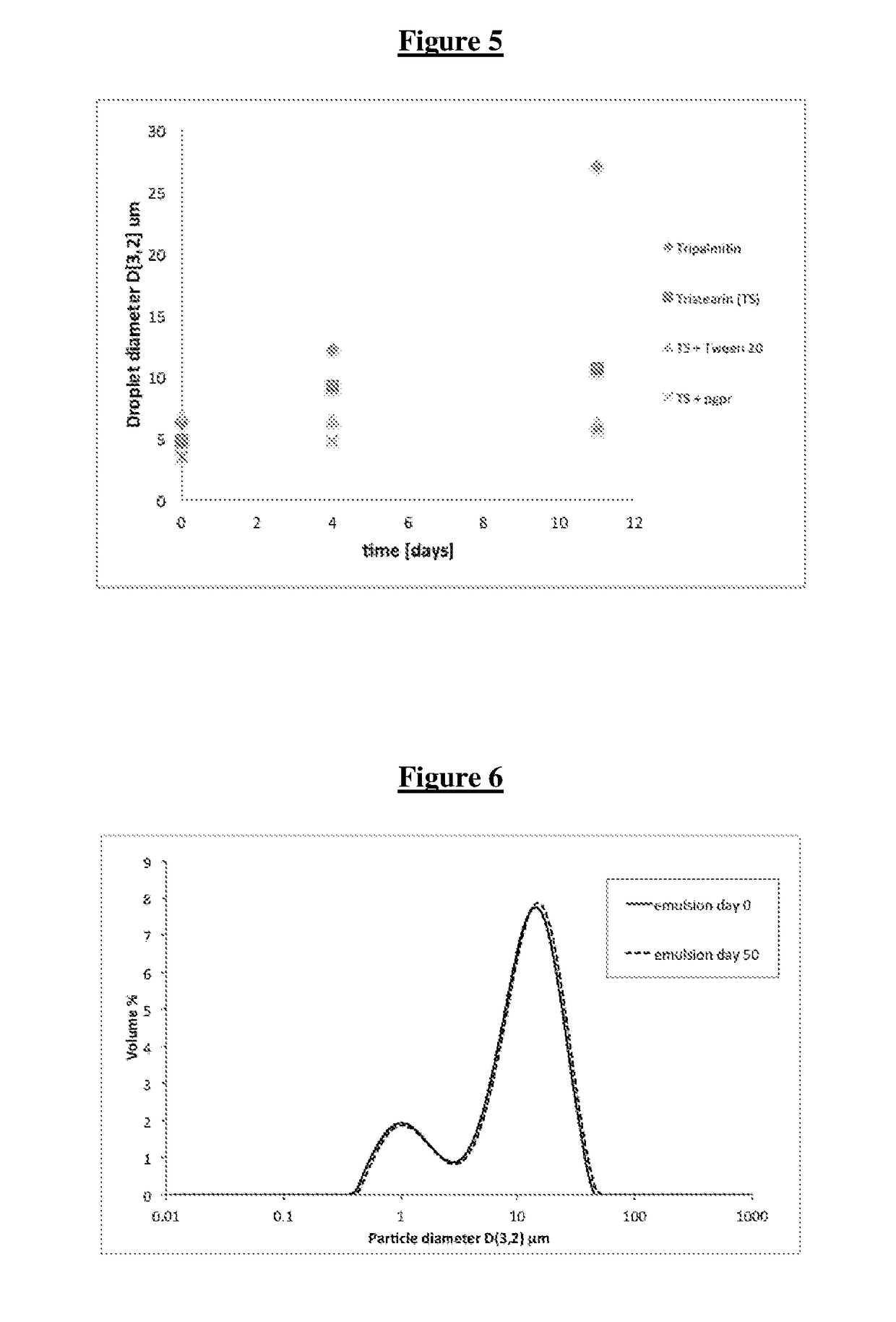Pickering emulsion formulations
a technology of emulsion and pickering, which is applied in the directions of biocide, transportation and packaging, mixing, etc., can solve the problems of droplet coalescence, limited use efficiency of aqueous systems with certain crop protection agents, and formulation types suffering
- Summary
- Abstract
- Description
- Claims
- Application Information
AI Technical Summary
Benefits of technology
Problems solved by technology
Method used
Image
Examples
example 1
[0167]This series of examples illustrates the preparation of an aqueous dispersion of solid lipid particles, which can then be employed as colloid stabilisers in the preparation of an emulsion.
[0168]3 g of a solid triacylglycerol (e.g. tripalmitin, tristearin, 1:1, 2:1 and 1:2 mixture of tristearin and tripalmitin, 2:1 mixture of tristearin and monopalmitin, 1:1 mixture of tristearin and Carnauba solid lipid; weight ratios) was combined with 0-3 g emulsifier (e.g. Tween™ 20, Whey Protein Isolate=WPI, Lecithin, 1:1 mixture of Lecithin and Tween 20, Polyglycerol Polyricinoleate=PGPR), 0.006 g preserving agent (potassium sorbate) and 53.994-56.994 g double distilled water in a 100 ml glass beaker. The formulations are shown in Table 1.
[0169]A total 60 g batch mixture was heated to 75-80° C. (temperature above the melting point of the lipids and below the cloud point of Tween™ 20) while stirred with a magnetic stirrer for 10 min. Subsequently the hot mixture was sonicated for 3 minutes ...
example 2
[0172]This series of examples illustrates the preparation of an aqueous dispersion of lipid particles containing lipophilic model active encapsulated within the lipid matrix that can then be employed as a colloid stabilizer in the preparation of an emulsion.
[0173]3 g of a solid triacylglycerol (e.g. tripalmitin, tristearin, 1:1, 2:1 and 1:2 mixture of tristearin and tripalmitin, 2:1 mixture of tristearin and monopalmitin, 1:1 mixture of tristearin and Carnauba solid lipid) was combined with 0.03 g model lipophilic active (Sudan III) while heated above the lipid melting point and stirred with the magnetic stirrer until the active dissolved (ca. 0.5 hour). This was then combined with 0-3 g emulsifier (e.g. Tween™ 20, WPI=Whey Protein Isolate, Lecithin, 1:1 mixture of Lecithin and Tween™ 20, PGPR=Polyglycerol Polyricinoleate), 0.006 g preserving agent (potassium sorbate) and 53.964-56.964 g double distilled water in a 100 ml glass beaker. The formulations are shown in Table 2.
[0174]The...
example 3
[0177]This example illustrates the preparation of a lipid-particles-stabilised-W / O-emulsion with a lipophilic active encapsulated within the particles and a hydrophilic active encapsulated within the dispersed phase.
[0178]10 g of aqueous dispersion of lipid particles (stabilised with no emulsifier or Tween™ 20 or PGPR or Lecithin or 1:1 mixture of Lecithin and Tween 20) containing lipophilic active (Sudan III, as per Example 2) were combined with 1 g of hydrophilic active (10% solution of NaCl) and 39 g of liquid oil (e.g. sunflower oil, mineral oil, silicone oil, methyl oleate, hexadecane) and homogenised with a rotor-stator mixer (Silverson™) for 1-3 minutes at 10,000 rpm, while cooled in an ice bath. Such prepared W / O emulsions were stored at 4-8° C. The formulation is shown in Table 3.
TABLE 3Ingre-Concentration (w / w %)dient3A3B3C3D3E3F3G3H3ILipid20particledis-persionExam-ple 2AExam-20ple 2BExam-2020202020ple 2CExam-20ple2DExam-20ple 2OSun-7878787878floweroilMineral78oilSilicone7...
PUM
| Property | Measurement | Unit |
|---|---|---|
| Temperature | aaaaa | aaaaa |
| Stress optical coefficient | aaaaa | aaaaa |
| Emulsion | aaaaa | aaaaa |
Abstract
Description
Claims
Application Information
 Login to View More
Login to View More - R&D
- Intellectual Property
- Life Sciences
- Materials
- Tech Scout
- Unparalleled Data Quality
- Higher Quality Content
- 60% Fewer Hallucinations
Browse by: Latest US Patents, China's latest patents, Technical Efficacy Thesaurus, Application Domain, Technology Topic, Popular Technical Reports.
© 2025 PatSnap. All rights reserved.Legal|Privacy policy|Modern Slavery Act Transparency Statement|Sitemap|About US| Contact US: help@patsnap.com



